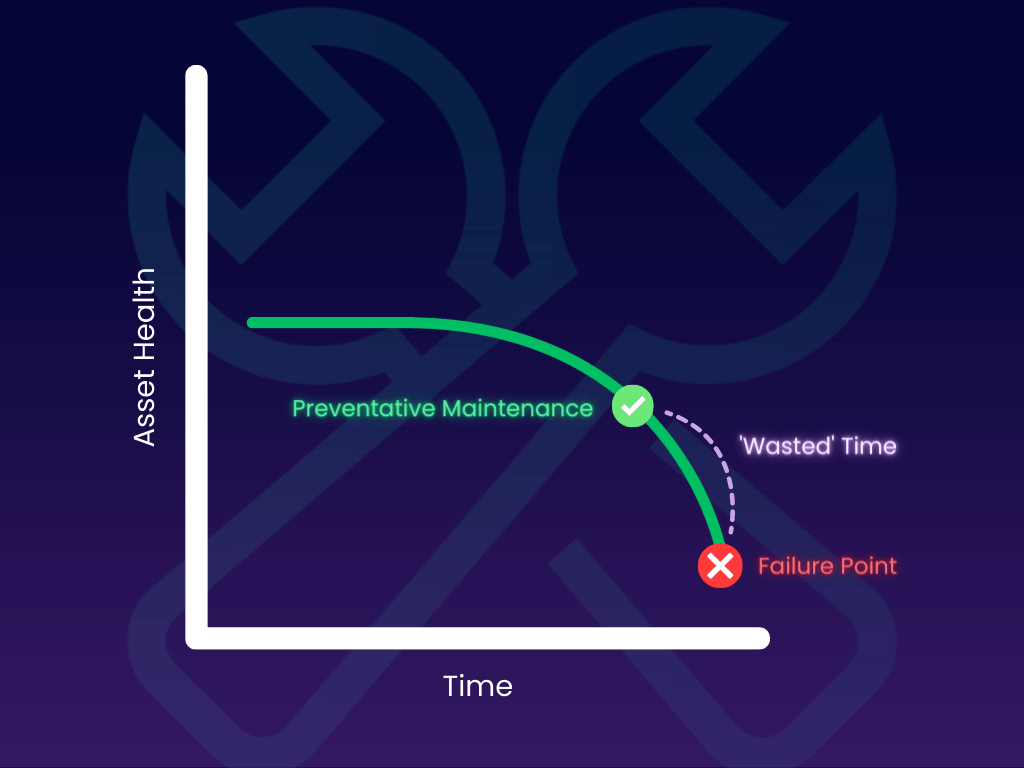Reactive, Preventative & Predictive Maintenance: The Difference
In this blog we will explain what the three main kinds of maintenance are - reactive, preventative and predictive.
3 min read
 Konnor Baskaran
May 19, 2022 2:00:00 PM
Konnor Baskaran
May 19, 2022 2:00:00 PM
Dynamic cleaning is one of those rare phenomena – a development that’s a win for everyone involved. Soft FM companies can cut costs and improve the quality of their delivery, customers enjoy better value and higher standards and the cleaners themselves are under less pressure as they have clear direction on where to focus their efforts, and maximise their productivity.
Dynamic cleaning combines the power of digitalisation with more efficient processes and enables the delivery of a true output-based specification.
It involves the intelligent deployment of works management software combined with a network of Internet of Things (IoT) sensors. These might include, PIR (person in room), footfall, door open and desk occupancy sensors to identify areas that have seen heavy usage, allowing the software to automatically direct cleaners to where they are needed.
Let me give you an example of how this works in practice. One of my clients has a contract to clean a customer site with over 100 washrooms, the accompanying offices are spread over 36 floors. Seven cleaners were required to attend the washrooms alone.
We advised our client to introduce simple door open sensors to indicate footfall to each washroom, which after a calculated number of visits, triggers an alert that’s sent directly to the team’s smart phones to attend.
This means that while every area still has a daily clean, the two previously scheduled spot-check cleans have been replaced with an automatic call based on usage. With the most intensively used areas receiving the attention needed to keep them spotless, at the expense of the time previously wasted checking washrooms that hadn’t been used.
To supplement the door sensors, I suggested the introduction of IoT (Internet of Things) call buttons that enable building occupants, if they notice a clean is needed, to alert the cleaning team.
This is driving user engagement and changing perceptions of the service. Instead of moaning about the state of the office kitchen, and blaming it on Dave from Accounts (sorry Dave), staff can simply press the call button to request a clean-up. When they then see cleaners turn up 20 minutes later they’ll be impressed with the prompt service.
While this is bread-and-butter for us, for our customers it’s game-changing. Since introducing call buttons, Compass Denmark is seeing an average response time of just 49 minutes to service requests. To put this in context: previously, the best response times were around 4 hours, but it sometimes took a couple of days to rectify an issue.
A year on, our customer’s audit scores have improved dramatically because, with dynamic cleaning, if there are no reactive jobs coming from the washrooms, cleaners are instead directed to spend their time in areas that previously received the lowest audit scores. This common-sense approach has pushed 5/10 audit scores up to 9/10 as the cleaners now have the time to clean properly.
%20(1)-jpeg.jpeg?width=326&name=AdobeStock_186232381%20(1)%20(1)-jpeg.jpeg)
The sensor deployments have saved so much time that three fewer cleaners are needed on site throughout the day, so our client is saving upwards of £6,000 a month on staff costs, as well as achieving a higher standard of cleaning. Even once the modest costs of the platform are taken into account, he is seeing a 150% ROI. He is now using this ROI to price more competitively when tendering for new contracts and the orders are rolling in.
So far, I’ve talked about the benefits of dynamic cleaning for a single site but these are multiplied when you’re working across several locations.
It’s also worth mentioning that the principle behind dynamic cleaning can be applied to almost any task in any industry. Sensors can flag when bins are full and need emptying, when public toilets are dirty and need cleaning, or when bulbs in a car park have blown and need replacing.
%20(1)-jpeg.jpeg?width=276&name=AdobeStock_165035498%20(1)%20(1)-jpeg.jpeg)
Taking a wider view, rather than pest control companies employing operatives to drive around the country checking if an animal has been caught in a trap, sensors can alert them when traps need emptying, resulting in time and fuel savings. Door mats, hospital ward curtains, laundry stores, consumable monitoring, temperature checks, lux levels…
You get the idea – this is a concept that can be applied to almost any aspect of your operations, with benefits that scale exponentially with the size of your business.
-png.png?width=562&name=General%20Jobs%20Dashboard%20(1)-png.png)
This is by no means an exhaustive list of potential use cases. Essentially, dynamic scheduling is about exploiting the power of two sources of data: real-time usage of a facility and past audit performance. By using mpro5 to aggregate these two data streams, businesses can effortlessly produce efficient and effective work schedules.
In short, it’s all about working smarter, not harder.

In this blog we will explain what the three main kinds of maintenance are - reactive, preventative and predictive.

The Facilities Management market is growing. Despite the pressures of inflation, hybrid working and staff shortages, the market is worth $68 billion...
Contract review time can be a white-knuckle experience for many cleaning businesses. You think you’ve maintained decent audit scores, but is that...